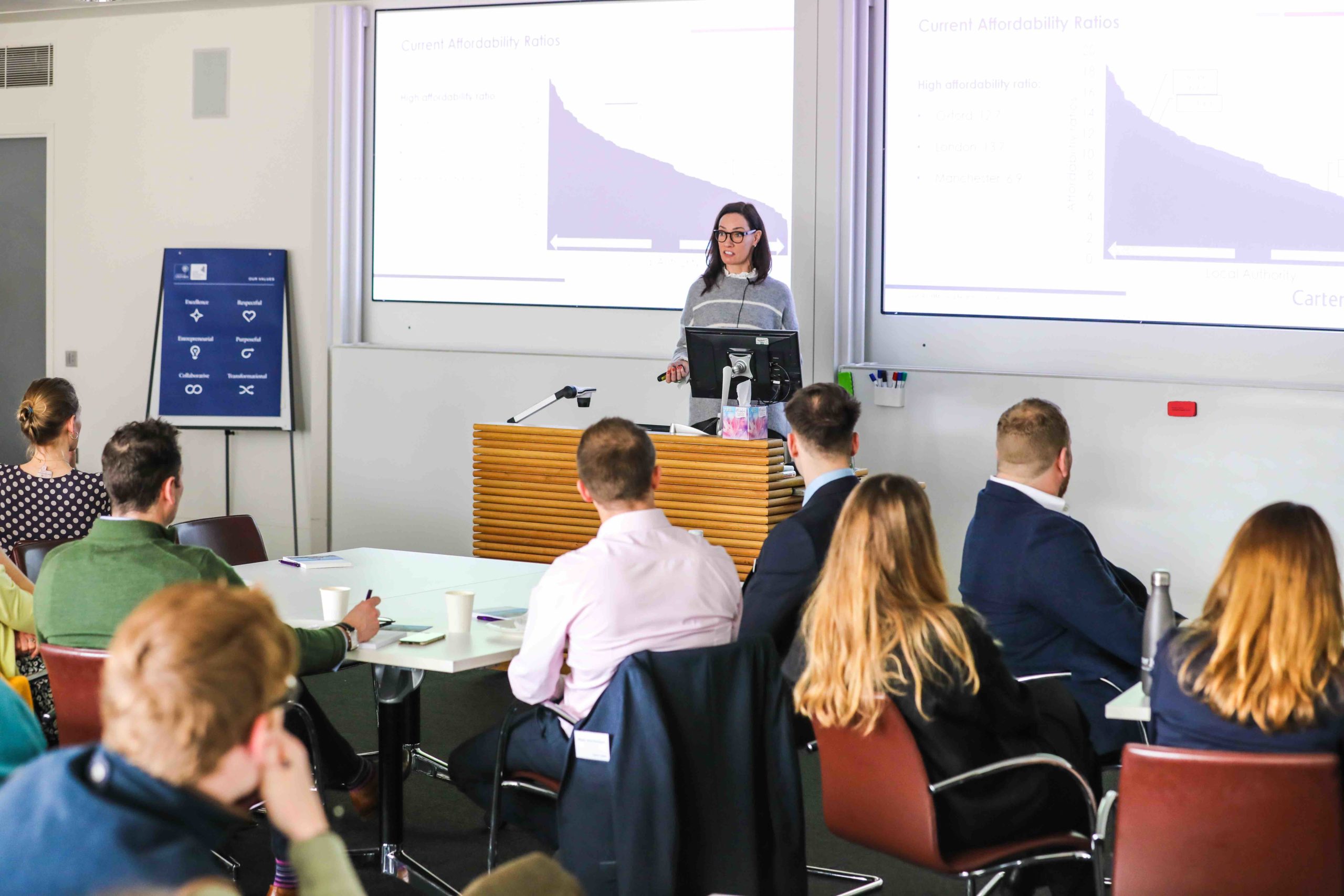Jon Silversides, partner at Carter Jonas Oxford (pictured above), explains the demand for lab space from the life sciences sector across the county and assesses the knock-on effects.
We recently welcomed more than 80 guests from across Oxfordshire’s property and business community to Saïd Business School for our Oxford Spring Update, looking at life sciences and its impact on the region’s commercial and residential property markets.
Colleagues Matt Lee, head of our science and technology team, Leslie Schroeder, head of residential research, and Nicky Brook, a partner in our planning and development team, joined me to discuss the opportunities and complexities around Oxfordshire’s status as one of Europe’s most successful life sciences clusters. Although, it should also be noted, that the Oxfordshire economy includes many science sectors, outside of life sciences, such as satellite technology, EVT, battery tech, fusion energy and AI.
Life sciences companies based in Oxford received nearly $1.2 billion in funding in 2021 and almost $1.1 billion in 2022, but, as Matt pointed out, life sciences is a broad definition, comprising core biopharma, core med tech, digital health, genomics and industries associated with the supply of good and services to these businesses.
The impact of the life sciences sector on our commercial property market is substantial. Investment in companies based here continues to translate into demand for more space. And, of the average annual take up on the office and lab market over the last three years – around 300,000 sq ft – 58 per cent involved life science companies.
When looking at this rapidly evolving sector we see such a range of occupiers that a variety of stock is transacting to support their needs, including hybrid/industrial space, remodelled offices, as well as turnkey lab solutions.
However, an increasingly common theme running through these requirements is the need for space now. Businesses want to get going, so readily available stock, or the speed of its delivery, is a huge consideration. Another key dynamic relates to capital expenditure – with certainly, early-stage businesses, looking for turnkey solutions where landlords deliver the fit-out where possible.
We are seeing good rental tones in our regional markets, particularly with prime stock. In Oxford, the rental range is anything from £20 per sq ft for a hybrid building to £105 per sq ft for one of the turnkey schemes, with a lot negotiated in the middle.
Questions concerning supply – a lack of stock, on the one hand, or the potential for oversupply – are increasing, are we likely to see feast or famine? Of the former, we have no purpose-built, speculatively available stock in Oxfordshire over 10,000 sq ft and just a few smaller spaces available. A handful of buildings are being delivered to the market in September, but the 18-20-month lag for new stock has prompted many to repurpose existing office buildings.
Across Oxfordshire, we estimate a development pipeline of around 4.7 million sq ft of planned/consented/in planning space, of which circa 2.9 million sq ft falls within Oxford. Considering the average annual take-up, a possibility of a spike in delivery in 2025 is suggested by some.
More realistically, I expect a more elongated development cycle, with the planning process, energy/power constraints and practicalities surrounding obtaining vacant possession restricting delivery. Only 154,000 sq ft of new build lab stock is being delivered this year and, from our market visibility, around 500,000 sq ft of commercially available products within the next two years in Oxford.
Considering the estimates of one million sq ft of demand, this year will prove key to underpinning the market. Whilst often overused – when discussing the outlook for our commercial market, the phrase, cautiously optimistic, seems apt.
That said, as Leslie and Nicky highlighted, limitations in the planning and delivery of residential stock also have the potential to restrict the growth in the region.
Oxford remains one of the most expensive places to live in the UK – 60 per cent above the national average. There are currently just 3,800 units in the pipeline within Oxford and 38,600 within the county and this lack of new build stock is likely to create further pressure on prices.
In the medium term, there are plans for schemes that will effectively co-locate alongside newer science locations such as Begbroke, Culham, Harwell and, in the longer term, Grenoble Road in Oxford, whilst the delivery of the Cowley branch line and links to expand the commuter reach will be a game changer.
Moving forward, just as with commercial stock, planners and developers need to consider the best types of spaces (ie homes) are in the right places and increase supply to meet growing lab development. There is an argument that more Build-to-Rent units could deftly meet the specific needs of many working in the life sciences sector and help stabilise rental growth, which has increased by 18 per cent since 2021.
While it would seem that we are almost at capacity, there is an awareness that we face real competition from other major national and international clusters and there is a push towards key stakeholders working more closely together to help meet demand and alleviate cost pressures.
Gallery below shows more scenes from the event at Saïd Business School.
© Thames Tap (powered by ukpropertyforums.com).
Sign up to receive our weekly free journal, The Forum here.













